Despite popular opinion, the first animals in space were not dogs or chimps, they were fruit flies launched by the United States in February 1947. The Soviet Union launched Laika, the first dog into space in November 1957 and now, it seems Iran is getting in on the act. A 500kg capsule known as the “indigenous bio-capsule” with life support capability was recently launched atop the Iranian “Salman” rocket. It has been reported by some agencies that there were animals on board but no official statement has been released.
Continue reading “Iran Sent a Capsule Capable of Holding Animals into Orbit.”This is What War (and Borders) Look Like From Space
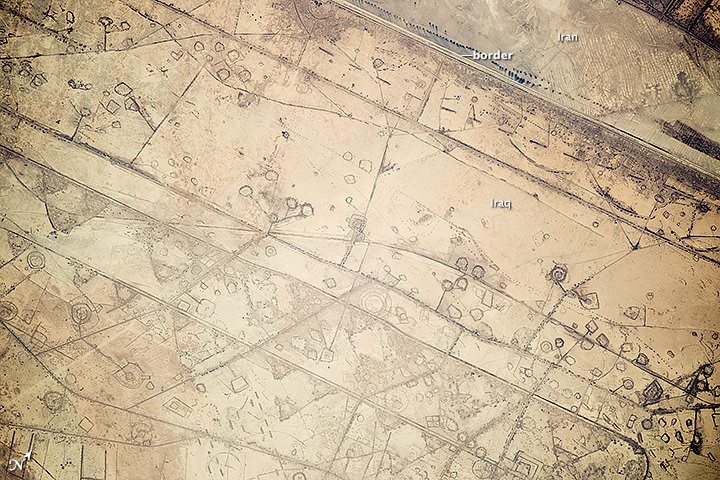
There’s an oft-used idiom that you can’t see political borders from space, but we’ve known for a while it’s no longer true. Between higher resolution cameras and the increase in human activity, there have been several examples of borders visible from space. Here’s one more.
Astronauts aboard the International Space Station took this photograph in November of 2014 of a 20-kilometer (12-mile) stretch of the Iraq-Iran border, near the coast of the Persian Gulf. Clearly visible is the border between the two countries, along with signs of fortification: circular gun emplacements, systems of large curved earthworks and straight connecting roads that run parallel to the border.
NASA said the ISS team that analyzes astronaut photos first thought the circular features to be oil-pad installations (like ones seen in Texas here). But they said the “strategic location of these formations along the international boundary made it easier to see these as patterns of military fortifications. This region of oil refining and exporting was the center of numerous military actions during the war in the 1980s, especially during the defense of the southern city of Basra.”
Back in 2011, we featured an image from astronaut Ron Garan which clearly showed the human-made border between India and Pakistan. Since 2003, India has illuminated the border with Pakistan by floodlights in attempt to prevent ammunition trafficking and the infiltration of terrorists.
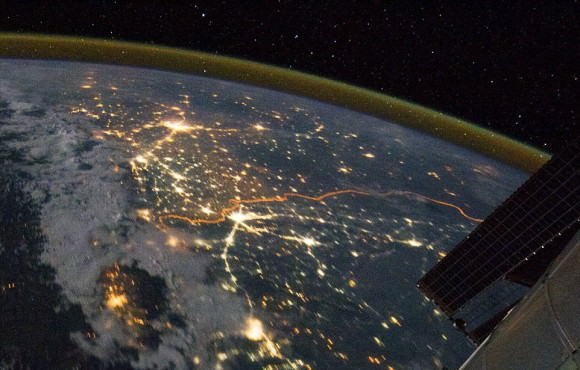
“Realizing what this picture depicted had a big impact on me,” Garan said. “When viewed from space, Earth almost always looks beautiful and peaceful. However, this picture is an example of man-made changes to the landscape in response to a threat, clearly visible from space. This was a big surprise to me.”
There’s also a satellite photo from the M-Sat Planet Observer showing the clear border and demilitarized zone between North and South Korea.
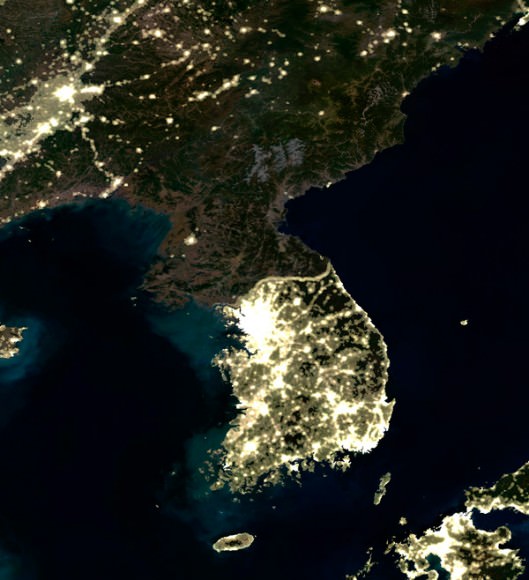
Sources: NASA, Fragile Oasis, M-Sat Planet Observer
Second Monkey Travels Safely To Space And Back, Iran Reports
Iran’s space program reportedly launched its second monkey into space on a 15-minute flight on Saturday (Dec. 14).
Reports from the Islamic Republic News Agency said the ballistic flight reached as high as 75 miles (120 kilometers). That’s just beyond the Karman line of 62 miles (100 kilometers) that many authorities cite as the boundary of space.
“The President said that thank God, Iranian astronauts launched into the space the second monkey, Fargam, on the first day of the Week of Research, the ‘Pajouhesh’ explorer and landed in full safety and health,” read a dispatch on IRNA, which is the official state agency in Iran.
The launch has not been verified outside of Iran. In January, the country announced the launch of a first monkey, Pishgam (which means “Pioneer” in Farsi).
The United States, Soviet Union and France sent primates themselves into space in the 1960s, many of which did not survive the trip. “Ham” is among the most famous monkey space voyagers; the U.S. chimp launched into space and landed safely on Jan. 31, 1961, a few months before astronaut Al Shepard became the first American person in space that May.
Iran Releases Plans for Manned Spacecraft
After Iran launched a monkey in a suborbital rocket earlier this year, they are now setting their sights on sending humans to orbit, according to the Iranian news agency ISNA. The news release says researchers at the University of Haj Nasir “have designed and built a manned spacecraft,” but only images of basic designs were released.
The spacecraft appears to be a classic capsule design, and is capable of carrying “one to three people to lower orbits for several hours. This type of aircraft is made up of several modules.”
The researchers, Leila Khalajzadeh and Mehran Shams, were reported as saying in their presentation that the capsule design is the most economical type of spacecraft.
The Israeli news site Hayadan reports that Tal Inbar, head of the Space and UAV Research Center at Fisher Institute for Air and Space Strategic Studies in Israel, says that no technical data was released from Iran on the new spacecraft designs, nor have they provided information about the launch vehicle required to send the capsule to space.
According to details released earlier by the Iranian space agency, they want to launch the first sub-orbital spaceflight with an Iranian on board by 2016 at an altitude below 200 kilometers as preparation for the eventual orbital spaceflight.
Iranian participation in the future Chinese space station program has also been discussed.
Reportedly, much of Iran’s technological equipment derives from modified Chinese and North Korean technology. In 2008, Iran successfully launched a two-stage all solid-fuel sub-orbital sounding rocket called the Kavoshgar-1 (Explorer-1), for the first sub-orbital test flight from the Shahroud space launch complex. Later, in 2010-2013, at least three animal flight tests were sent on suborbital launches, some flights with outright failures, others with varying degrees of success.
Iran Launches a Monkey on a Suborbital Rocket
According to Iran state media, Iran launched a suborbital rocket last week with a passenger aboard: a monkey. A gray tufted monkey survived the flight, riding inside an “indigenous bio-capsule” which was recovered after the flight. While the US and other nations are worried that Iran’s real goal is to have a nuclear missile program, Iran’s Defense Minister Ahmad Vahidi told state television that this launch was a “big step” towards sending astronauts into space by 2020.
Iranian news agencies said the rocket traveled to an altitude of 120 kilometres (75 miles) for a suborbital flight. The space capsule was named Pishgam, which is “Pioneer” in Farsi. The launch has not yet been independently verified.
“This success is the first step towards man conquering the space and it paves the way for other moves,” General Vahidi said, but added that the process of putting a human into space would be a lengthy one.
“Today’s successful launch follows previous successes we had in launching (space) probes with other living creatures,” he said, referring to the launch in the past of a rat, turtles and worms into space.
A previous attempt in 2011 by Iran to put a monkey into space failed, and they never provided an explanation for the failure.
Much of Iran’s technological equipment derives from modified Chinese and North Korean technology. Iran denies that its long-range ballistic technology is linked to its atomic program.
Sources: SpaceRef, Fox News.
Strait of Hormuz Shot from the International Space Station – World Strategic Flashpoint
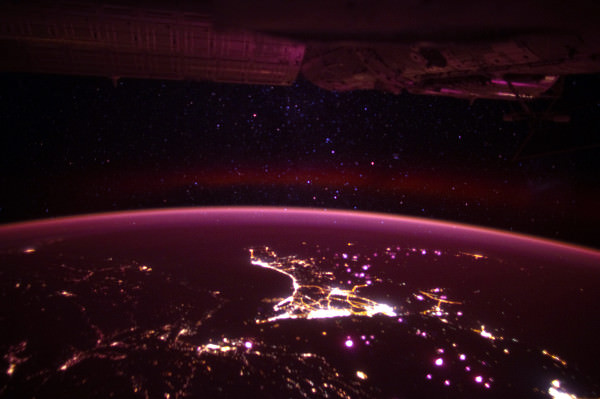
[/caption]A beautiful and peaceful Christmas-time picture of The Strait of Hormuz was shot from the International Space Station (ISS) soaring some 250 miles (400 kilometers) overhead on Christmas Eve, 24 Dec 2011.
Today, the economically vital Strait of Hormuz is a ‘Flashpoint of Tension’ between Iran and the US and much of the rest of the world community because of official threats by Iranian government officials to shut the highly strategic waterway to crude oil tankers that transport the lifeblood of the world’s economy.
The timely image above was just tweeted by NASA Astronaut Ron Garan who wrote; “Interesting peaceful pic of the #StraightofHormuz #FromSpace taken on Christmas Eve (12/24/11) from the #ISS”. Garan served aboard the ISS from April to September 2011 as a member of the Expedition 27/28 crews.
The Strait of Hormuz lies at the mouth of the Persian Gulf between Iran and the Arabian Peninsula and is a major chokehold of the world’s energy consumption.
At its narrowest point, the Strait is only 34 miles (54 kilometers) wide. The vital shipping lanes span barely 2 miles (3 kilometers) in width in each direction (see maps below).
See more ISS photos of the Persian Gulf region and the Strait, below.
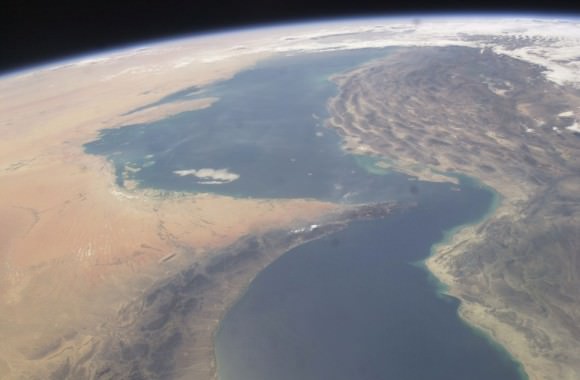
Taken from the International Space Station on Sept. 30, 2003. United Arab Emirates, Oman and Saudi Arabia at left, Iran at right. Credit: NASA
Each and every day, about 20% of the world’s daily petroleum consumption is shipped through the extremely narrow channel on gigantic Oil tankers. Any disruption of petroleum shipments would instantly send crude oil prices skyrocketing to exhorbitant levels that could wreak havoc and rapidly lead to a worldwide economic depression and a devastating war between Iran and the US and its allies.
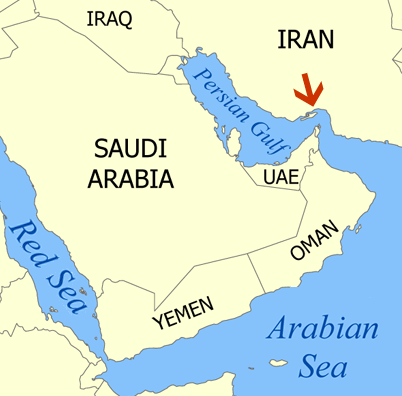
In recent days Iranian boats have approached US Naval warships at high speeds while they were heading through the Strait of Hormuz – playing a potentially deadly game of cat and mouse that could spin out of control in a single misstep, even if unintentional.
Clashes would easily disrupt the crude oil tanker shipping traffic.
Several Iranian speedboats came within about 800 yards of the US vessels in recent days as a war of words has flared over oil and Iran’s nuclear program as tensions escalate.
Video Caption: Iranian speedboats closely approach US Navy ships at high speed in the Strait of Hormuz on Jan. 6, 2012. Credit: US Dept of Defense
The US and allied fleet operates in the Gulf region to protect the oil shipments and the oil installations of a number of Arab countries including Saudi Arabia.

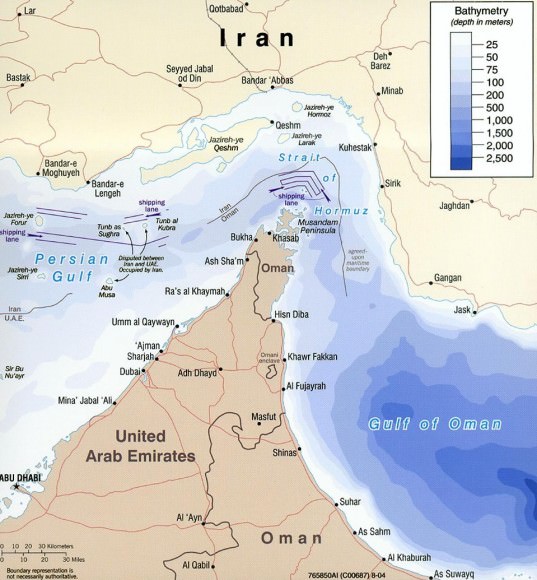
An international crew of six men from the US, Russia and Holland are currently in residence aboard the ISS running science experiments.
ISS Expedition 30 Commander and US astronaut Dan Burbank snapped gorgeous photos of Comet Lovejoy during this Christmas season – look here.
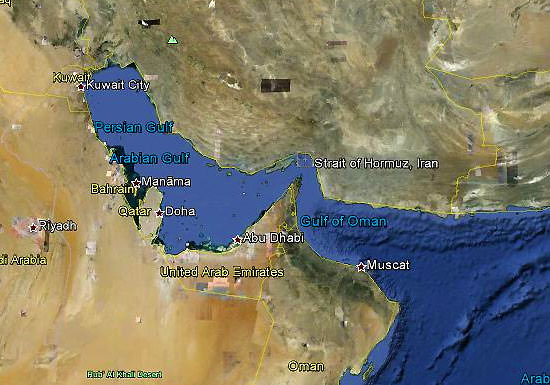
Look here for dazzling photos of the ISS crossing the Moon – shot just days ago from NASA’s Johnson Space Center in Houston
Read Ken’s recent features about the ISS here:
Dazzling Photos of the International Space Station Crossing the Moon!
Solar Powered Dragon gets Wings for Station Soar
Absolutely Spectacular Photos of Comet Lovejoy from the Space Station
NASA announces Feb. 7 launch for 1st SpaceX Docking to ISS


